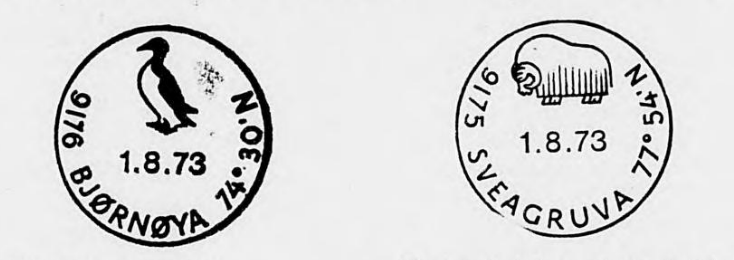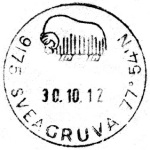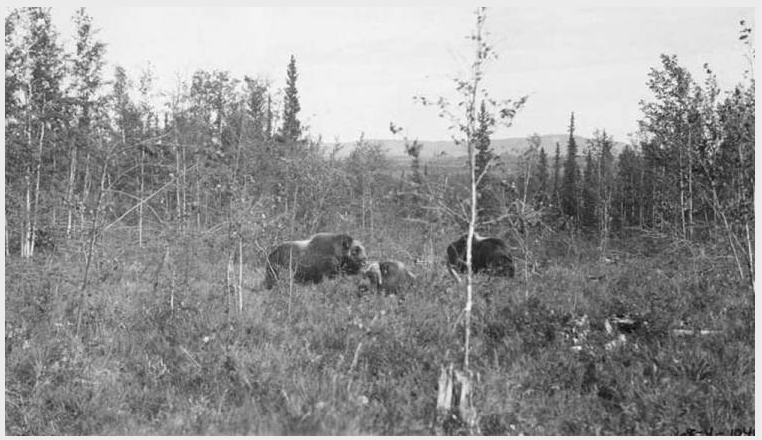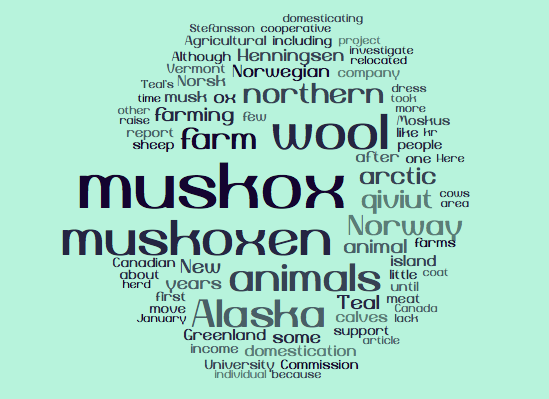
Muskoxen making a mark

If you ask people to name iconic polar animals, a few would probably appear on the list with the polar bear most assuredly on top. In 1967, the Norwegian Post Office issued official postmark for three Svalbard locations, Longyearbyen, Ny Ålesund, and Isfjord radio, which each featured an animal from Svalbard: reindeer, seal, and polar bear, respectively. These were obvious choices.
In 1973, the Post Office decided to add to the original set with special postmark for Bjørnøya and Sveagruva. Bjørnøya featured a thick-billed murre (a bird in the auk family called polarlomvi in Norwegian), the first bird in the series. Sveagruva got a muskox!
I discovered this as I spent most of the day reading newspaper articles from the 1950s through 1990s from Svalbardposten, the local newspaper of the Svalbard archipelago, and a few other northern Norwegian newspapers that have been digitized and made available by the Norwegian National Library. An article from Nordlands Avis on July 10th, 1973, caught my eye with its illustration of the new postmarks which were coming out August 1st.

The choice of the muskox as the image for Sveagruva shows how familiar the muskox had become to the people of Svalbard. Muskoxen had been on Svalbard since 1929 when 17 calves were released. The population had ups and downs, but never grew very large. In 1973 a few months after the postmark was issued, a new census of the Svalbard muskox showed that there were probably about 40 animals alive. Stories about animals roaming into towns or someone nearly running into a mad bull in the countryside made appearances in Svalbardposten every few years.
When the choice about the postmark’s image was being made, something else, perhaps an arctic fox which was the prized object of fur hunters, could have been chosen to represent Sveagruva. But it wasn’t. The muskox turned out to be iconic, as it would later in the Dovre mountain area. It had a uniqueness and appeal as a symbol of the Polar North was matched only by the iconic nature of the polar bear, reindeer and seal.

Yet an iconic status doesn’t guarantee a long life. The muskoxen would be extinct on Svalbard only 12 years later–the last muskox sighting was in 1985.
In spite of the animals being gone, the muskox postmark for Sveagruva is still in use. It serves as a haunting reminder of the shaggy icons which roamed Svalbard for 66 years.



One Comment
Pingback: